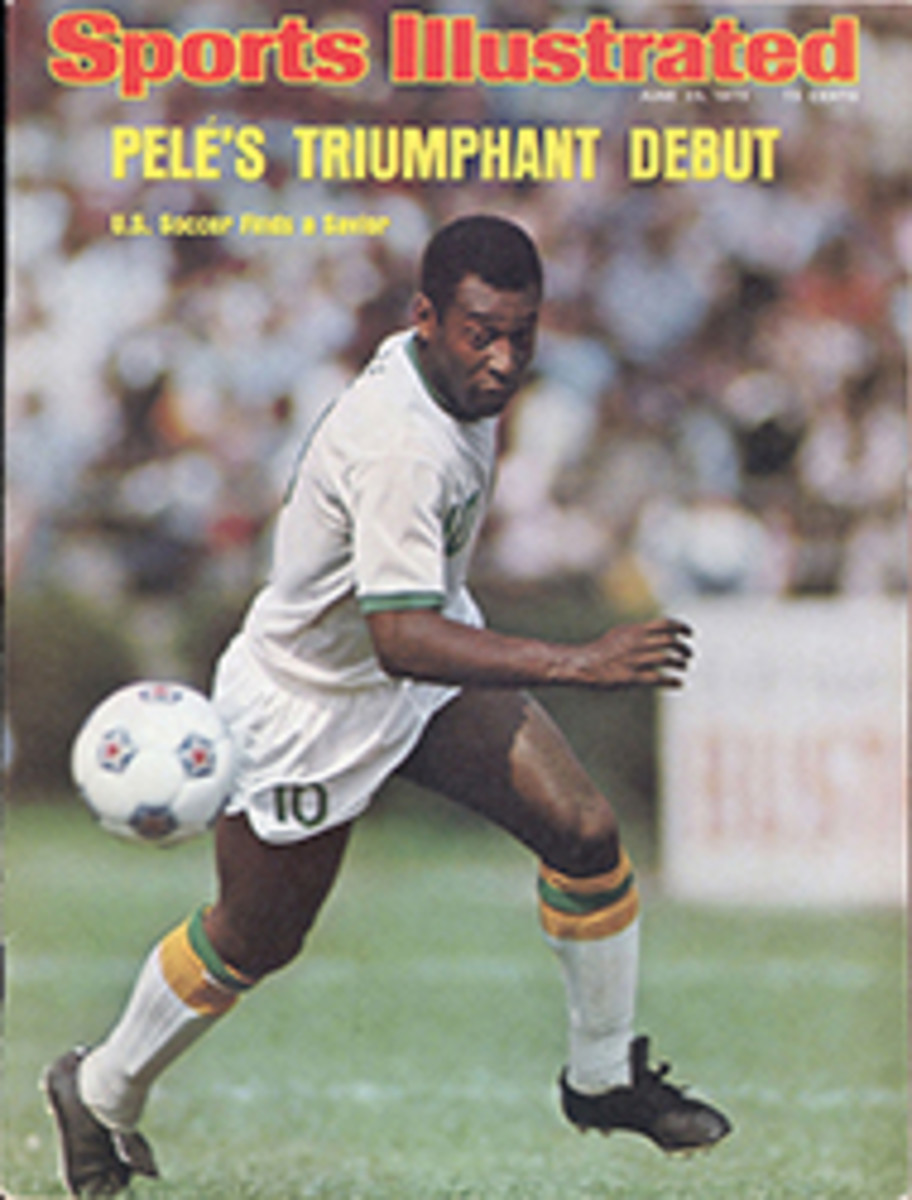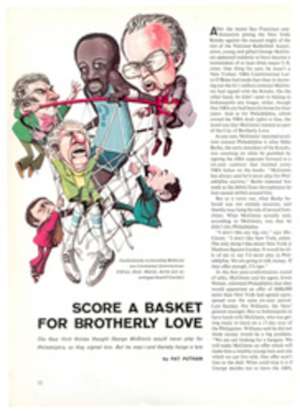
It's elementary! Watson
Dusk was pulling steadily on its window shade and a numbing March wind bore in from the water surrounding Hilton Head Island, S.C., as Tom Watson stood on the practice tee. Earlier in the day he had shot an uninspired round in the Heritage Classic at Sea Pines Plantation. Now, like a recalcitrant youngster made to stay after school and write repetitively on the blackboard, he was practicing penmanship with a seven-iron. But he was out of chalk. The driving range had no more balls and its shivering young attendants stared at him imploringly. It was time to go home.
As he left, the golfer had a look of resignation. It is said that no one hits more practice balls than Tom Watson. His diligence and indomitable spirit are admired by his peers almost as much as his classic swing. If he were a stock market listing rather than a young golfer, he would be the subject of inside investor buying. For Tom Watson, 25, is sometimes called the Next Great Golfer, the man to pick up wherever and whenever Jack Nicklaus leaves off.
Some might think the accolade a bit premature. First of all, there is Johnny Miller to consider. Then, too, Watson has won just two pro tournaments. But his progress has been as steady as a graph of inflation. It took him only three seasons to join the top 10 money-winners' list. His rapid rise on the list has taken him from 79th place to 35th to 10th. Like Ben Hogan, a man whose size he approximates, he can rivet himself to the practice tee and, more important, glean something other than blisters from the work.
To be more than a bookend in golf a player must win a major championship. That is Watson's next goal. He led last year's U.S. Open at Winged Foot at the end of the third round, then shot a 79 to finish fifth. This April he led the Masters briefly, eventually finishing tied for eighth despite a 7 on the par-3 16th in the final round.
Watson is only 5'9" and 160 pounds, but he has bulging forearms and a durable physique. He once won the NCAA long driving contest; belted a 370-yard drive in a U.S. Amateur and is the only player ever to reach the par-5, 562-yard 15th hole at Hilton Head's Harbour Town course in two strokes. His shots, like those of Miller and Nicklaus, fly very high, enough so that he can use his driver off the fairway. "He's so strong," says his friend Hubert Green. "In the rough he's like Nicklaus. He's a bold putter. And he's got a garbage can full of guts."
With his shock of brownish-red hair, boyish grin and impish look, he appears to have been invented by Mark Twain. "The reporters write that he looks like Huck Finn or that he just stepped off his raft," says his wife Linda. "It's his trademark. We don't mind. Besides, he does look like Huck Finn."
Linda is a perfect complement to her husband. He is basically courteous but apprehensive around strangers. She is open and extroverted. He can be melancholy when his swing misbehaves. She tends to be buoyant. Their relationship is such that they consider themselves a team. For the time being, Tom does not enjoy the luxury of a business manager, so Linda keeps his schedule and handles his correspondence. Away from the course they maintain a private life. "Traveling together on the tour is one of the worst things a man and woman can go through," says Watson. "A lot of times, for the wife, it gets down to doing needlepoint. I try to give Linda all the responsibility I can. The tour is not all fun and games. You play the game as a game, but it's business. We treat it that way."
Something of an anomaly in the hyper-conservative tour group, Watson supported George McGovern in the 1972 election, and when he was a junior at Stanford a hometown paper in Kansas City quoted him thus: "[College] has opened my eyes to a lot of things.... Like pollution and racism.... Racism, that's a state of mind. Pollution is more clear-cut. It's an enemy you can't close your eyes to...that is approaching you head on." At present he is trying to establish a golf team fund at Stanford.
As an amateur his record was unspectacular. He was not on scholarship at Stanford and played only sporadically in amateur events, although he did finish in a tie for fifth in the 1969 U.S. Amateur, earning an invitation to the Masters the following year. Anyway, amateur records have proved meaningless as a firm gauge of success among the pros. Nicklaus is the only ranking amateur of recent years who fulfilled his promise. Others, like Bruce Fleisher, Marty Fleckman and Steve Melnyk, are still out there struggling. Then there are those who had brief success, earning for the moment the sobriquet the Next Great Golfer, only to settle back—people like Jerry Heard, Lanny Wadkins and Ben Crenshaw.
That is not expected to happen with Watson, because of his tenacity, his propensity for hard work and his confidence. "Tom's so sure about what he does," says Green. "If you don't believe, you're in trouble because you start to doubt what you're doing."
Stan Thirsk is the pro at the Kansas City Country Club, where Watson still is a member. Thirsk had played the tour and is still good enough to be a competitor in this week's U.S. Open, but during Watson's formative years he was his tutor. Thirsk, Watson, Tom's father Ray, a six-handicapper, and a top K.C. amateur named Bob Willits frequently played together. "Tommy had to mow some lawns sometimes to pay up when he lost," recalls Thirsk, "but don't think he always lost. Lots of youngsters play golf well, but they don't understand why. Tommy knows why. He's like Nicklaus in that respect. Sam Snead and Hogan are the supreme examples of golfers who succeeded in different ways. Snead had lots of natural talent, Hogan had the capacity to work and work. Watson is more like Snead in that he has natural talent, but he also has Hogan's willingness to work. Tommy isn't anywhere near the point of complacency yet. It takes a lot of beating golf balls to get better, and Tommy will beat on them."
"When we ask our friends what they do during their time off from the tour," says Linda, "they talk about hunting and fishing. Ask Tom, and he says he hits balls and practices."
Watson won the Kansas City match-play championship when he was 14 and the next year played an exhibition with Arnold Palmer, at the time his idol. The youngster was strong off the tee, but wild, and this day he spent time looking out from behind the trees, although he made some long putts and scored well. Since then Palmer kiddingly has called him Snake. This year they were paired in the second round of the Masters. At the par-5 13th hole Watson scored an eagle and momentarily moved into the tournament lead. The Snake seemed to have straightened out his game.
There are still some shortcomings in Watson's game, however, and occasionally he muses over them—about how he must learn to handle pressure, and the importance of patience. Because of his meager amateur tournament experience, he is a neophyte at these things. He had a four-stroke lead going into the final round of the 1973 Hawaiian Open and shot a 75 to lose. Later in the year he had a six-stroke bulge after a 62 in the fifth round of the 144-hole World Open at Pinehurst, then finished 76-76-77. He was in contention in the L.A. Open this year but hit two straight balls out of bounds in the third round. And then there was the humiliating debacle on Sunday in the Masters. "The thing that bothers me is when I keep making the same mistakes," he says. "Then I'm not learning."
Of course he is learning, spectacularly well, in fact. He shot a 69 and came from six shots off the pace to win the Western Open last year, boldly smacking a driver off the 18th, a tight driving hole where even the more flamboyant players were using three-woods or irons. And he won the Byron Nelson Classic this May on a final round of 65, making four birdies on the back nine. He did not have a bogey that day.
"I'm not where I want to be yet," he says. "I have the potential to be a great golfer. But a lot of times potential is not fulfilled. I'm young, and I still have quite a few years in the game. I'm giving myself a chance."
PHOTO
WATSON OFTEN STOOPS TO CONQUER

